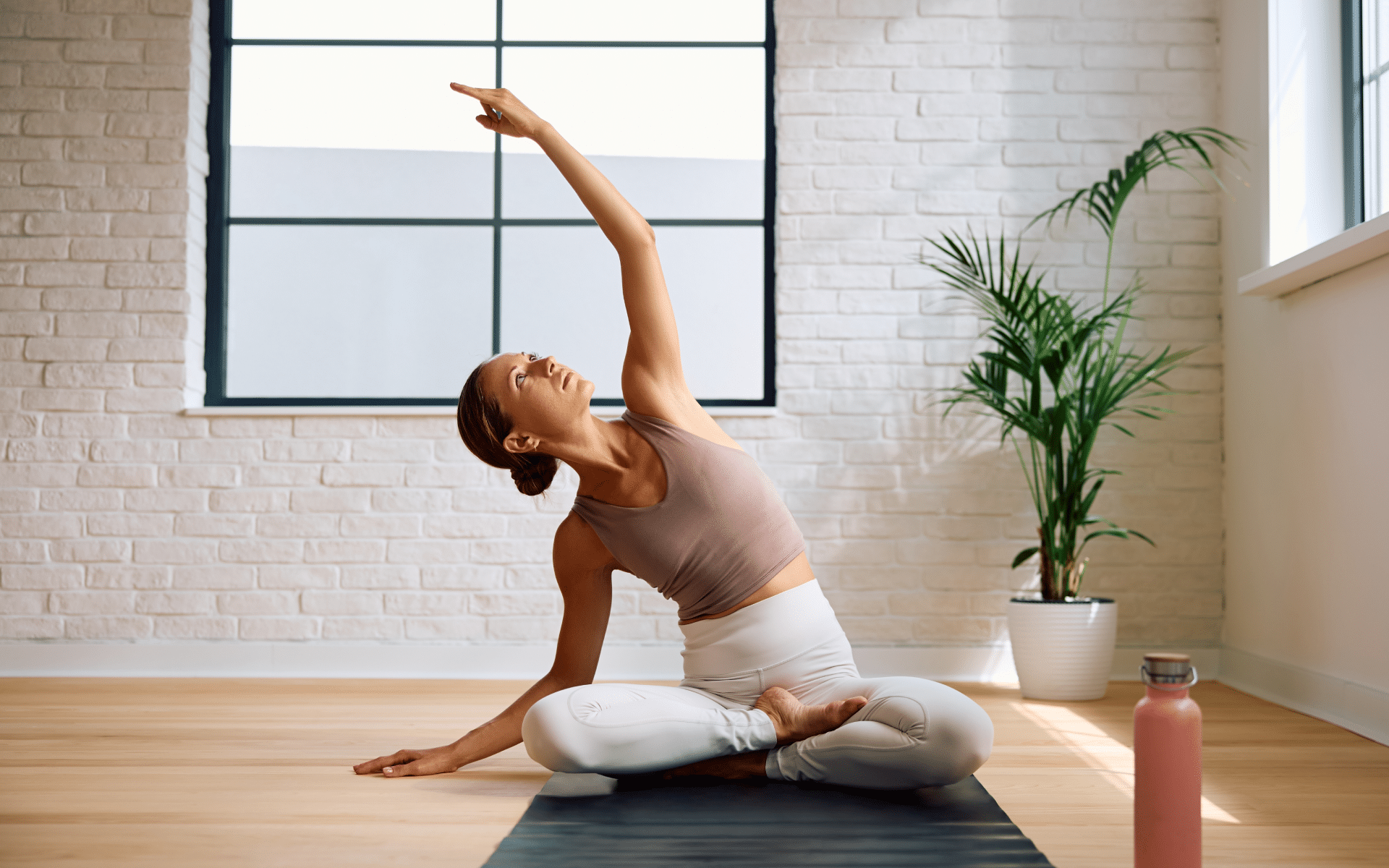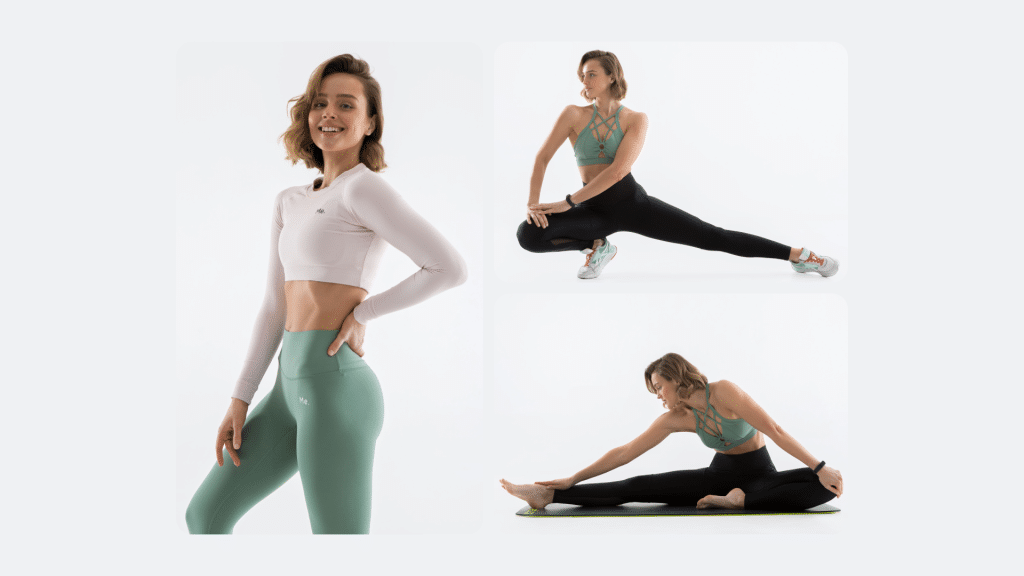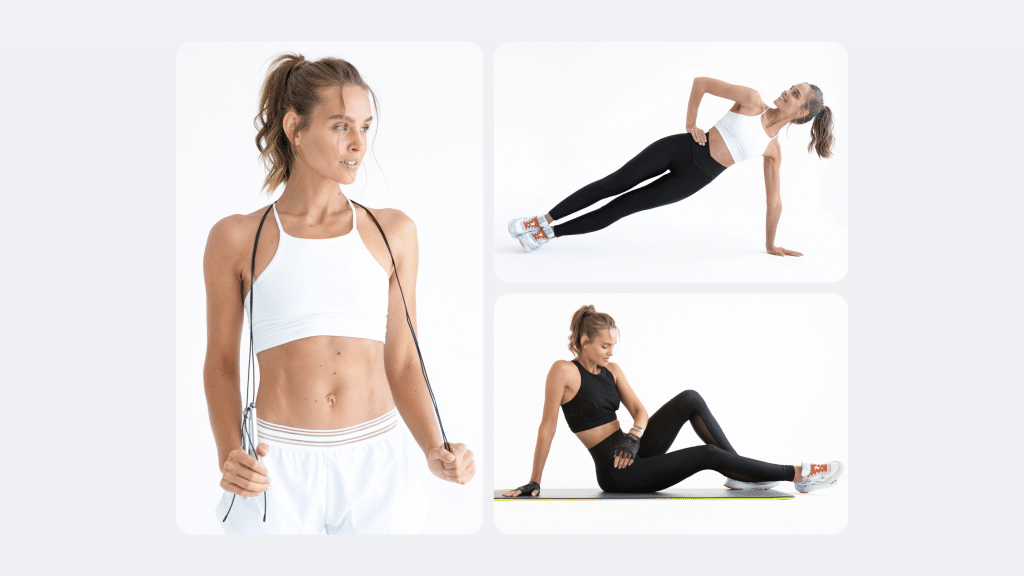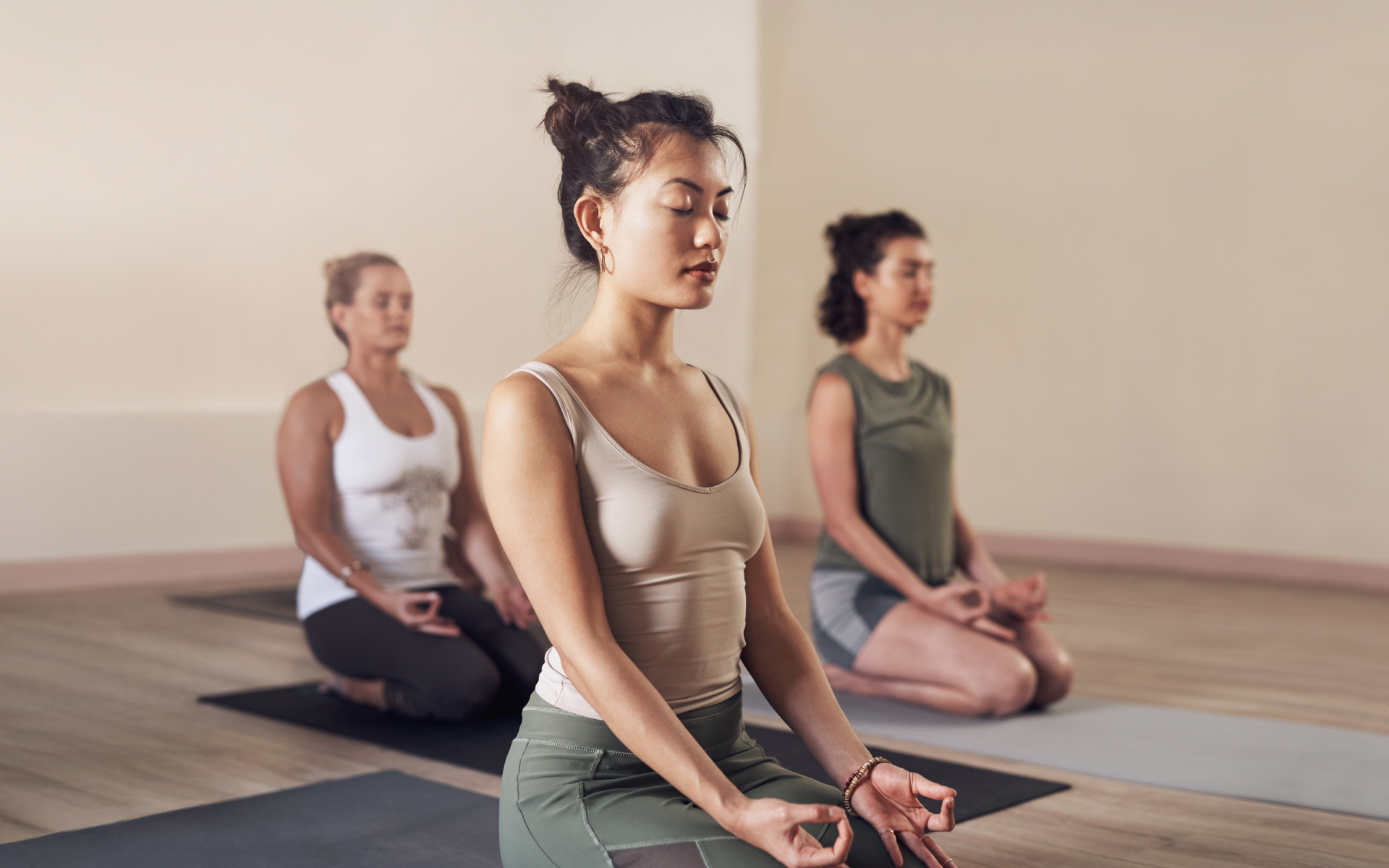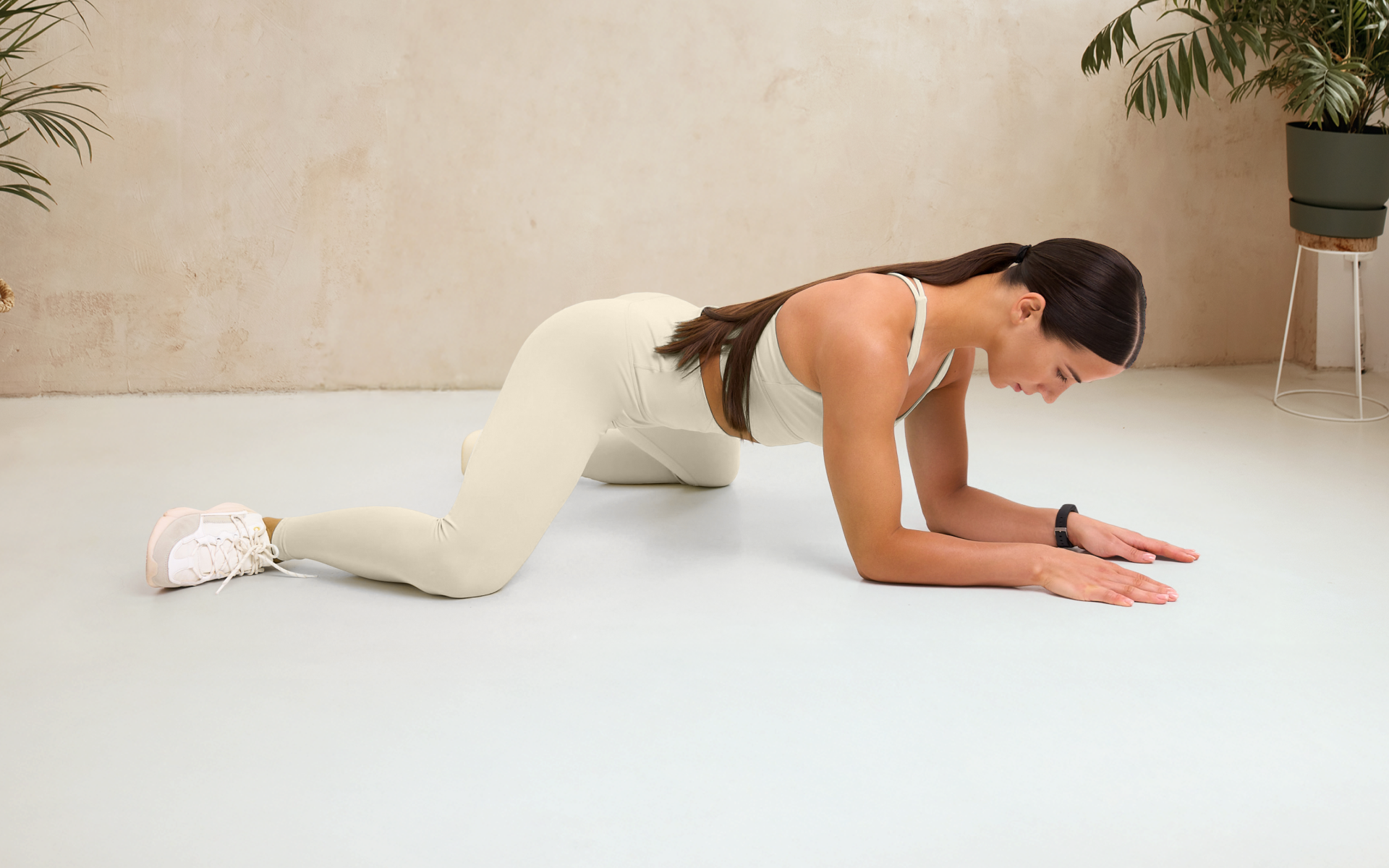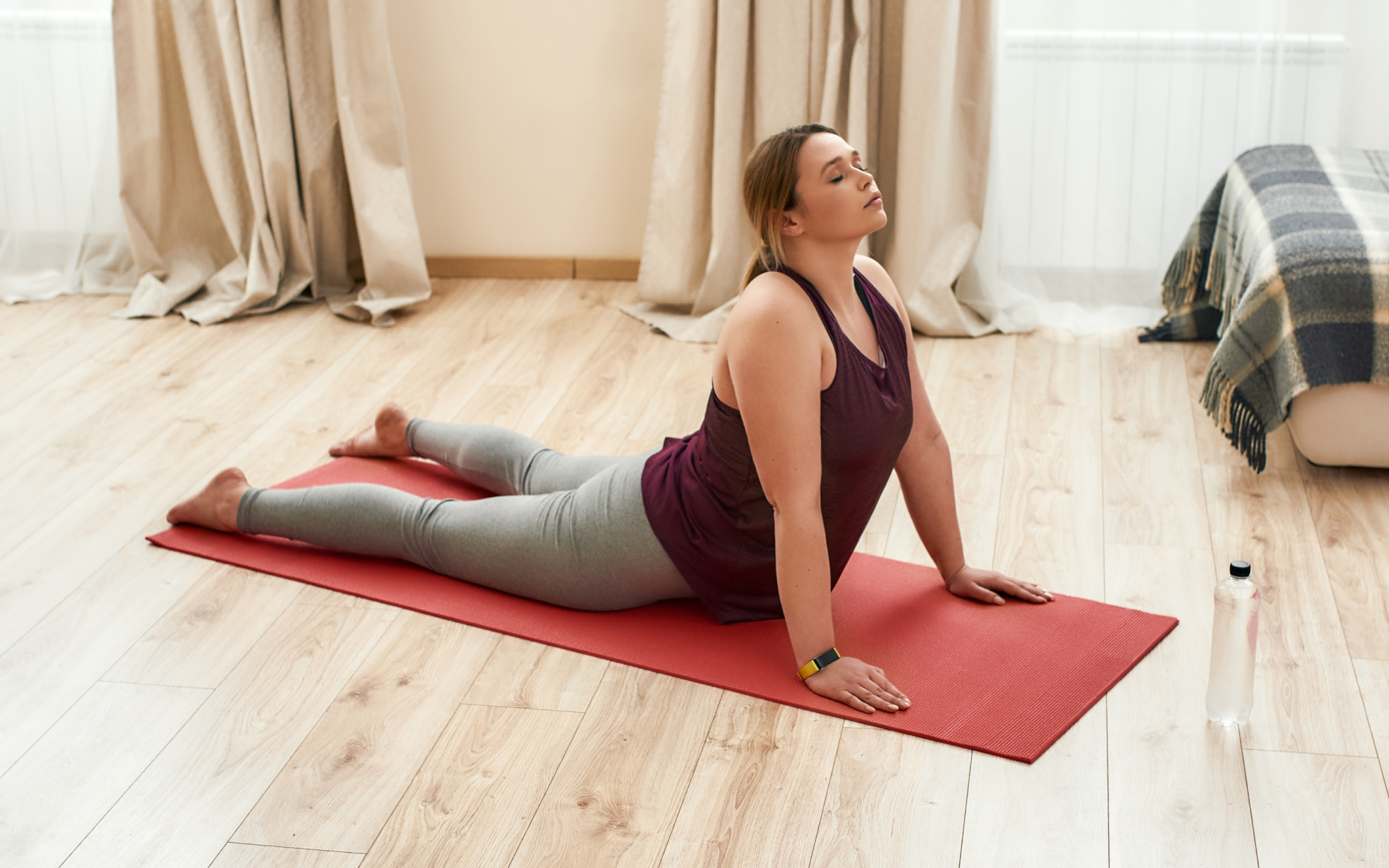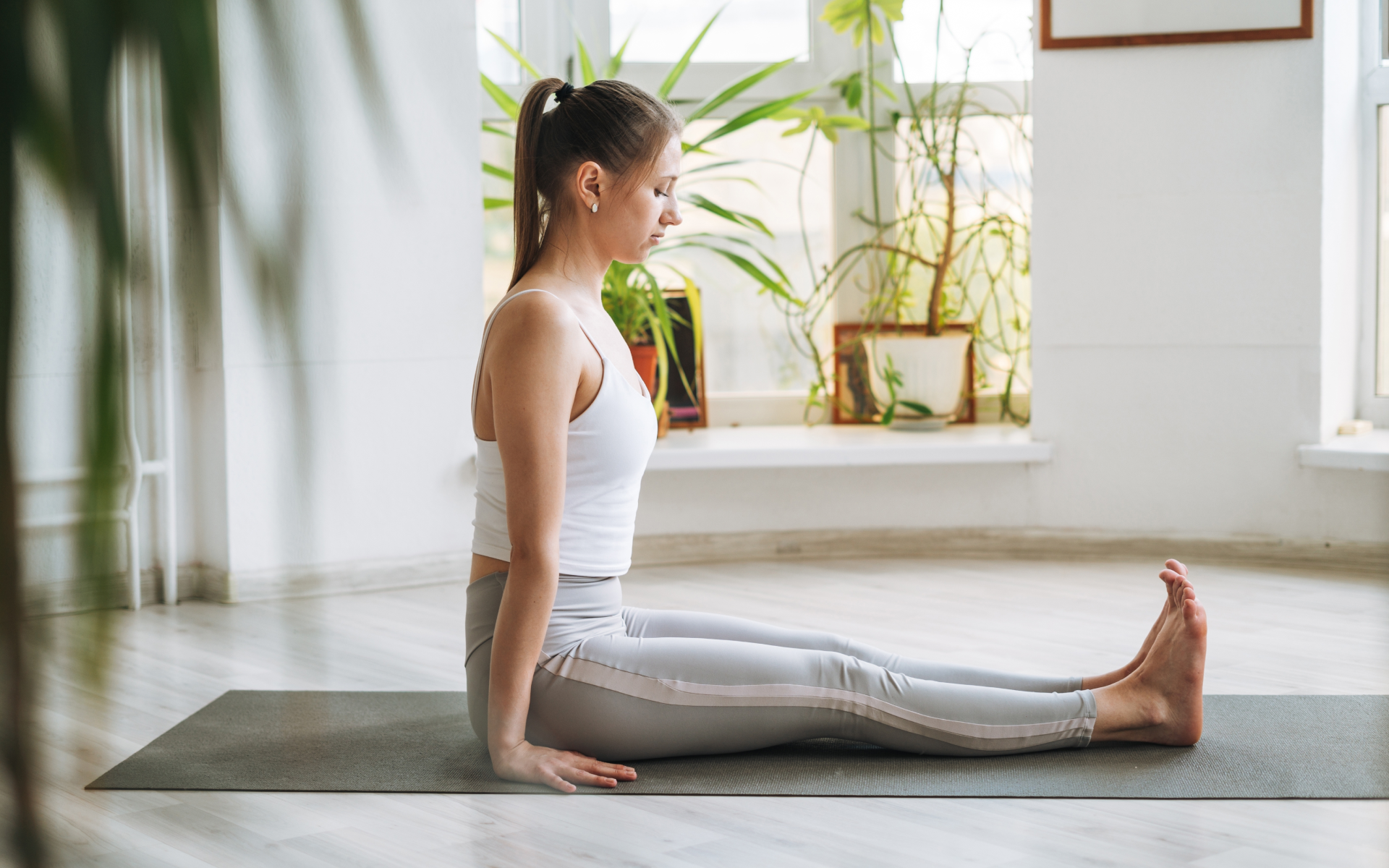If you’re searching for an accessible physical activity that can transform your approach to movement, look no further than somatic Pilates.
Somatic Pilates invites you to tune into your body’s internal sensations during each movement. Unlike traditional fitness routines that often emphasize certain fitness or appearance-based goals, somatic Pilates focuses on how you feel rather than what you can achieve. When it’s practiced regularly, this method may help you build greater awareness of your physical and emotional well-being while also releasing any tension that may contribute to feelings of distress.
In this article, we’ll explore what somatic Pilates is, how it differs from traditional Pilates, and helpful tips to consider before you get started.
What Is Somatic Pilates?
Somatic Pilates is a mind-body practice that emphasizes the connection between physical movement and internal awareness (1). Unlike traditional fitness approaches that often prioritize achieving specific appearance goals or fitness milestones, somatic Pilates shifts the focus to how you feel during movement.
As a form of somatic education, Pilates was originally developed by Joseph Hubertus Pilates (2). This method was initially designed to support dancers and athletes in their training. However, over time, its benefits have become widely recognized, and it has since gained popularity among the general public as a highly accessible and effective mind-body activity (1).
A central feature of somatic Pilates is mindful movements, which encourage individuals to bring their full awareness to the present moment and notice any physical sensations in their bodies without judgment (1)(3). This present-moment awareness may facilitate better regulation of emotions and release stored emotions in the body, thereby helping improve the mind-body connection.
Other key aspects of somatic Pilates that have remained consistent over the years include its focus on building body awareness, improving mental focus, and calming the body through intentional breathwork (1)(4).
What’s the Difference Between a Somatic Workout and Pilates?
The word “somatic” is rooted in the Greek language, with “soma” translating to “of the body” – in essence, somatics refers to “of or relating to the living body.”(5).
Somatic workouts are designed to deepen the mind-body connection by honing in on the physical sensations experienced during movement. They focus on building your awareness of these internal sensations, which helps release both physical and emotional tension from your body (6).
When differentiating somatic Pilates vs traditional Pilates, it’s important to remember that Pilates can encompass a broad range of practices, often involving simple and repetitive movements (7), but not all Pilates routines are considered somatic. Traditional Pilates often aims to achieve certain outcomes rather than focusing on the mind-body connection. However, when Pilates is practiced mindfully and builds internal awareness, it can qualify as a somatic workout.
Most importantly, Pilates is only one form of somatic workout. Over the years, various somatic practices have been developed to help individuals enhance their mind-body connection and release stored tension in their bodies. Some of these somatic movement practices include:
- The Alexander Technique: Focuses on improving posture and movement habits to relieve chronic pain and tension (8)
- The Feldenkrais Method: Uses gentle movement and directed attention to increase range of motion and ease of movement (9)
- Laban Movement Analysis: Explores the body in motion, emphasizing how different movements may express different feelings or states of being (10)
Remember, before you try any form of somatic practice, it’s best to consult a healthcare provider to ensure it aligns with your individual health needs and goals.
BetterMe: Health Coaching app helps you achieve your body goals with ease and efficiency by helping to choose proper meal plans and effective workouts. Start using our app and you will see good results in a short time.
Is Somatic Pilates Legit? Somatic Pilates Benefits
Somatic Pilates is a legitimate, evidence-based practice that has demonstrated benefits for many individuals (11). While more research is required to confirm its effectiveness as a somatic practice, studies conducted so far seem promising, with many participants having reported various physical, emotional, and mental improvements.
Some of the common potential benefits of somatic Pilates include (1)(11):
- Improvement in mindfulness and self-compassion
- Improvement in emotional well-being and self-regulation skills
- Heightened sense of body awareness
- Improvement in strength and flexibility
- Increase in overall life satisfaction
Read more: Somatic Exercises for Releasing Grief
What Are Some Somatic Pilates Exercise Examples?
Somatic Pilates exercises vary in intensity and length, which makes choosing practices that best suit your health needs and goals very important. If you’re unsure about where to begin, consulting a professional can provide personalized recommendations that are right for you.
These exercises are designed to strengthen the connection between your mind and body. With slow, intentional movements, somatic Pilates encourages you to tune into your body’s sensations, which helps release tension and promote overall well-being (1).
Here are a few examples of popular somatic Pilates exercises:
Pelvic Tilts
Pelvic tilts can help release tension in the lower back while building awareness of your body’s alignment (12). Here’s how to do a basic pelvic tilt exercise:
- Lie down: Start by lying on your back with your knees bent and your feet flat on the floor, hip-width apart, taking a moment to notice how your body feels lying down.
- Breathe: Take a few deep breaths, feeling your belly rise and fall. With each exhale, allow any tension to melt away.
- Tilt your pelvis: Slowly tilt your pelvis upward, pressing your lower back to the floor, paying attention to sensations in your lower back and hips.
- Release: Gradually release the tilt, allowing your pelvis to return to its natural position, taking a moment to feel the shift in your body and any sensations.
- Repeat: Continue this motion, focusing on the sensations in your lower back and pelvis as you complete the exercise. If any thoughts arise, acknowledge them and gently bring your attention back to your breath and physical sensations.
Cat-Cow Stretch
The cat-cow stretch is a low-intensity exercise that helps warm up the body and gently improves flexibility in the spine (13). Here’s how to do a basic cat-cow stretch:
- Get into position: Start on your hands and knees in a tabletop position, with your wrists aligned under your shoulders and knees under your hips.
- Take deep breaths: Before you start, take a few deep breaths and notice how your body feels, including feelings of tension, tingling, or tightness.
- Inhale and arch: As you inhale deeply, arch your back, lift your head, and tilt your tailbone toward the ceiling (cow pose)
- Exhale and round: As you exhale deeply, round your back, tuck your chin into your chest, and draw your belly button toward your spine (cat pose)
- Move mindfully: Continue moving between these two stretches, syncing your breath with each movement and focusing on your internal sensations
BetterMe will shake off your mental funk, rid you of your energy-zapping habits, and help you sculpt the body of your dreams. Intrigued? Hurry up and change your life for the better!
Shoulder Bridge
The shoulder bridge exercise can help strengthen the core, glutes, and lower back while promoting a sense of grounding and stability (14). Here’s how to do a shoulder bridge:
- Lie down: Lie on your back with your knees bent and your feet hip-width apart. Take a moment to feel the surface beneath you, noticing contact with the ground.
- Breathe: Close your eyes and take a few deep breaths. With each inhale, try to invite calmness in, and with each exhale, release any tension or bodily distress.
- Lift your hips: Press into your feet and slowly lift your hips toward the ceiling, creating a straight line from your shoulders to your knees and noticing sensations that start to arise.
- Hold and breathe: Hold this position for a few breaths, focusing on engaging your core and glutes. Try to visualize energy flowing through your body.
- Lower slowly: Slowly lower your hips back to the floor, maintaining control throughout the movement. Take a moment to notice how your body feels upon returning to the mat, observing any shifts in energy or tension.
Leg Circles
Leg circles can help improve hip mobility and core stability while promoting a sense of mindfulness and body awareness (15). Here’s how to perform a leg circle exercise:
- Lie down: Lie on your back with one leg extended toward the ceiling, keeping the other leg bent with your foot flat on the floor, and notice any sensations.
- Engage your core: Engage your core to stabilize your pelvis, visualizing the strength and support your core muscles provide.
- Draw circles: Slowly draw small circles in the air with your extended leg, starting small and gradually increasing the size of the rotation.
- Switch directions: After a few circles, reverse the direction, focusing on the sensations in your hip and lower back. Observe any shifts or release of tension.
- Switch legs: Repeat the exercise with the other leg, maintaining awareness of your breath and sensations throughout your body.
When you’re looking for the best somatic exercise program, you should always remember to experiment with different techniques to find what works best for you. Whether it’s a somatic Pilates 28-day challenge or something more specific such as somatic stretches for hips, the BetterMe app offers plenty of resources and step-by-step tutorials to get you started!
Read more: What Is a Somatic Shoulder Release? Key Exercises for Releasing Emotions Stored in the Shoulders
Does Somatic Pilates Work for Weight Loss?
As with other somatic practices, somatic Pilates isn’t primarily focused on weight loss. Instead, these exercises emphasize how you feel during movement, which helps foster a stronger connection between the mind and body (1).
While certain somatic workouts may contribute to weight management by burning calories, particularly when paired with a healthy diet and lifestyle, they’re not designed with weight loss as the main objective.
For those whose primary goal is weight loss, it may be more beneficial to focus on exercises with higher activity and intensity levels. However, somatic Pilates can still be a valuable part of your routine as it offers potential benefits in improved body awareness and overall physical and mental well-being.
Yes, somatic workouts can be effective for improving the mind-body connection, helping regulate emotions, and releasing stored tension from the body (6). However, their effects can vary from person to person, and research into their overall efficacy is still somewhat limited. Not quite, but somatic yoga incorporates traditional yoga with somatic principles (16). Traditional yoga often focuses on achieving specific outcomes, such as physical fitness or appearance goals. In contrast, somatic yoga tends to prioritize how you feel during movement to improve the mind-body connection. Whether you exercise at home, outdoors, or at the gym, the most important thing is that you get enough physical activity in your day. Some people prefer the gym for its dedicated workout space, while others may feel more comfortable exercising at home or in a more private setting. Remember, the best choice is the one that suits your lifestyle and keeps you active. Pilates can be a great somatic workout, but it’s not the only option. Somatic exercises work differently for everyone, so if Pilates isn’t your thing, you could consider trying alternatives such as yoga or tai chi (17). Each of these somatic practices offers unique benefits, so exploring different options can lead to a more personalized routine that is effectively aligned with your individual needs and goals. For more somatic resources and exercise tutorials, check out the BetterMe app.Frequently Asked Questions
Do somatic workouts really work?
Are somatic workouts just yoga?
Can Pilates replace the gym?
What is better than Pilates?
The Bottom Line
Somatic Pilates is a unique mind-body exercise that can transform the way you think about movement. Whether your goal is to improve body awareness, reduce tension, or simply enhance overall well-being, you should start slowly and gradually increase your practice to get the most out of your somatic workout routine.
Remember, if Pilates isn’t quite your fit, there are plenty of other somatic workouts you can explore. Just make sure to consult a healthcare provider before you start to ensure any new practice is aligned with your health needs and goals.
DISCLAIMER:
This article is intended for general informational purposes only and does not serve to address individual circumstances. It is not a substitute for professional advice or help and should not be relied on for making any kind of decision-making. Any action taken as a direct or indirect result of the information in this article is entirely at your own risk and is your sole responsibility.
BetterMe, its content staff, and its medical advisors accept no responsibility for inaccuracies, errors, misstatements, inconsistencies, or omissions and specifically disclaim any liability, loss or risk, personal, professional or otherwise, which may be incurred as a consequence, directly or indirectly, of the use and/or application of any content.
You should always seek the advice of your physician or other qualified health provider with any questions you may have regarding a medical condition or your specific situation. Never disregard professional medical advice or delay seeking it because of BetterMe content. If you suspect or think you may have a medical emergency, call your doctor.
SOURCES:
- Pilates, Mindfulness and Somatic Education (2014, nih.gov)
- The History of Pilates (n.d., Pilates Method Alliance)
- Effects of Mindfulness on Psychological Health: A Review of Empirical Studies (2013, nih.gov)
- Effect of breathwork on stress and mental health: A meta-analysis of randomised-controlled trials (2023, nature.com)
- Soma-Significance: A New Notion of the Relationship Between the Physical and the Mental (2016, DynaPsych)
- How Somatic Exercises Work and Moves to Try for Your Mind and Body (2024, prevention.com)
- Pilates: how does it work and who needs it? (2011, nih.gov)
- The effect of Alexander technique training program: A qualitative study of ordinary behavior application (2014, nih.gov)
- The Effectiveness of the Feldenkrais Method: A Systematic Review of the Evidence (2015, nih.gov)
- A Somatic Movement Approach to Fostering Emotional Resiliency through Laban Movement Analysis (2017, nih.gov)
- Somatic Education and Mind-Body Disciplines: Exploring the Effects of the Pilates Method on Life Satisfaction, Mindfulness and Self-Compassion (2022, researchgate.net)
- How to Do a Pelvic Tilt (2024, VeryWell Fit)
- Cat/Cow Pose (2023, Mayo Clinic)
- Shoulder Bridge (2020, Your Pilates Physio)
- Leg Circles (n.d., Pilatesology)
- Exploring the therapeutic effects of yoga and its ability to increase quality of life (2011, nih.gov)
- How Does Somatics Compare to…? (n.d., Somatic Systems Institute)
